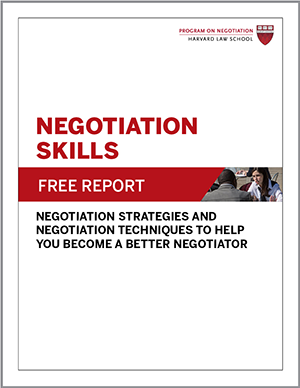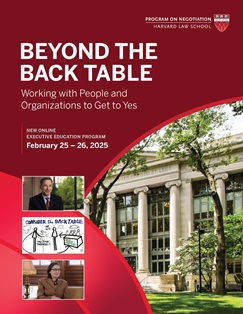In the world of mergers and acquisitions, some acquirers try to improve the companies they purchase by expanding them and emphasizing innovation, while others choose to focus on cutting costs. Due in part to millennials’ lack of appetite for prepackaged food, consumer-goods companies lately have been focused more on slashing budgets than on innovating. Many are exploring mergers to achieve greater efficiencies and scale, according to the New York Times.
In 2013, for example, the Brazilian private equity firm 3G Capital purchased Heinz and took it private, with financing from Berkshire Hathaway chief Warren Buffett. The legendary “Oracle of Omaha” had watched with admiration as 3G principal Jorge Paulo Lemann transformed a small Brazilian brewing company into Anheuser-Busch InBev through increasingly bold acquisitions and cost-cutting. Two years after their Heinz deal, Lemann and Buffett teamed up to buy Kraft, then took the combined business public as Kraft Heinz.
After making an acquisition, 3G follows a time-tested script that involves replacing most of the target’s executives with its own leaders, who then carry out mass layoffs, close factories, and institute internal penny-pinching. It’s been a recipe for success: Kraft Heinz saw its market value rise from about $63 billion to approximately $105 billion in the past two years.
Because innovation has not proven to be one of its strengths, to sustain its impressive gains, 3G instead repeatedly acquires companies and institutes cost-cutting measures. “It’s like the shark that can’t stop swimming,” one industry director told Fortune.
The latest big fish 3G set its sights on? Unilever—but the British-Dutch consumer-goods giant turned out to be the one that wriggled away. Our analysis of the deal reveals five lessons negotiators contemplating new partnerships should bear in mind before they approach
the table.
Polite conversation
In a February 27, 2017 interview with CNBC’s Squawk Box, Buffett recounted that in recent months, he, 3G’s Lemann, and Kraft Heinz CEO Alexandre Behring (a 3G cofounder) privately agreed to make a friendly offer for Unilever, as long as the company was “open to it.” (Buffett has said in the past that hostile takeovers are outside his area of expertise.) Unilever, whose brands include Hellmann’s, Dove, Knorr, and Lipton, was in a sales slump despite a strong presence in the developing world. The 3G-Berkshire team believed Unilever could give Kraft Heinz an international platform for its brands.
Buffett was happy to let 3G run the negotiation, despite owning a slightly larger stake than 3G in Kraft Heinz. (Together, Berkshire and 3G own just under 50% of the company.) “I’m not embarrassed to admit that Heinz is run far better under [3G] than would be the case if I were in charge,” he has said, according to Fortune. It’s a marked departure from Buffett’s usual strategy of trying to grow the companies he purchases through added investments in infrastructure and innovation. But his low-key role has allowed him to keep the “bloodletting” of American jobs and shuttered factories from staining his reputation, even as Berkshire’s $9.8 billion investment in Kraft Heinz has more than tripled, writes Fortune.
Behring traveled to London to quietly float the idea of a buyout to Unilever’s Dutch CEO, Paul Polman. “He didn’t get a yes, he didn’t get a no,” Buffett told CNBC. “He got perfectly polite conversation. And so [Behring] came back and said that he hadn’t been
thrown out.”
Two weeks after that meeting, sometime in February 2017, Behring returned to London, this time with a letter outlining a possible deal. Lemann, Buffett, and Behring agreed that if Behring again raised the possibility of a deal with Polman and got a neutral response, he would hand over the letter, but if he got a negative response, he would not. “He went over and felt he got a neutral response, and therefore gave the letter,” Buffett recalled to CNBC.
“No merit”
On February 17, the Financial Times’ Alphaville blog leaked rumors of a Kraft Heinz bid for Unilever in a live market chat.
“If this had involved only American companies, probably nothing would have happened, as the companies would have just declined to comment,” explains Steven Davidoff Solomon in the New York Times. But in Britain, where Unilever is traded, companies are legally required to announce the status of any potential acquisitions as soon as rumors emerge.
Likely not terribly surprised by the leak, the 3G-Buffett team went public with its takeover offer of $143 billion (roughly $50 per share). If completed, it would have been the largest cross-border merger since 2000, and shares of both Kraft Heinz and Unilever surged at the news.
But the Kraft Heinz team seemed caught off guard when Unilever immediately released a statement rejecting the Kraft Heinz bid, which it said “fundamentally undervalue[d]” Unilever’s worth; had “no merit, either financial or strategic, for Unilever’s shareholders”; and created no “basis for any further discussions.”
A friendly offer, spurned
Despite Behring’s earlier overtures, Unilever executives seemed to have been not only shocked by the offer but also horrified. Behind the scenes, they tried to persuade shareholders that Kraft Heinz’s cost-cutting culture and “lack of vision for cultivating brands” would be disastrous for Unilever, according to Bloomberg. The executives were also concerned about weighing down Unilever with a buyout funded largely by debt, the Guardian reports.
The political climate also discouraged a deal. Following the pound’s decline after the June 2016 Brexit vote, British lawmakers had been warning that foreign invaders might try to take advantage of “fire sales” of British companies, according to the New York Times. U.K. prime minister Theresa May had criticized Kraft in a speech for breaking promises not to close factories after its 2010 acquisition of British chocolate-maker Cadbury. As a result of Kraft’s behavior, British takeover law had been modified to require acquirers to be clear about their intentions during acquisition negotiations.
Unilever CEO Polman reportedly called Buffett and Lemann after the leak to warn them that neither the company’s board nor its investors were likely to support the proposed acquisition. For his part, Buffett said he told Unilever not to worry about receiving a hostile or unfriendly offer.
Backing away
Buffett and Lemann, who would have had to put up significant new capital to help fund the deal, were reportedly “spooked” by Unilever’s response, according to the Financial Times. Neither was used to having offers rejected, let alone so publicly and so soundly.
The odds of winning a public battle for their target were steep, they calculated. They would be pressured to commit to saving jobs and facilities in the United Kingdom, a promise at odds with 3G’s standard operating procedure. And any deal reached would face an uphill battle for regulatory approval in both Britain and the Netherlands, where Unilever is jointly based and nationalist fervor is also high.
On Monday, February 20, Kraft Heinz and Unilever released a joint statement saying that Kraft Heinz had “amicably agreed to withdraw its proposal for a combination of the two companies.” Unilever’s shares plummeted, and industry talk turned to guessing which consumer-goods company the Kraft Heinz shark would pursue next.
5 ways to set yourself up for a strong partnership
The following lessons from Kraft Heinz’s failed bid for Unilever apply to any negotiation dance between two potential partners.
1. Swing in your sweet spot.
Buffett famously formed his investment philosophy around baseball great Ted Williams’s observation that he tended to hit at an All-Star level at pitches thrown down the middle of the plate but swing poorly when balls came in low and outside the strike zone. “The trick in investing is to just sit there and watch pitch after pitch go by and wait for the one right in your sweet spot,” Buffett said in the HBO documentary Becoming Warren Buffett. “And if people are yelling, ‘Swing, you bum!’ ignore them.”
In investing, this means that Buffett is comfortable making friendly offers but not hostile ones. He also is not a price haggler: “I’m not a negotiator,” the famous dealmaker told CNBC. He “pays what he thinks something is worth and rarely stretches,” Jeff Matthews, who has written books on Berkshire Hathaway, told Bloomberg. “People tend to want to sell to him, so he usually gets his price.” And when he doesn’t, he is apparently ready to walk away.
When we play to our negotiating strengths and acknowledge our weaknesses, we can end up waiting patiently for the right deal or walking away from one we dearly want—and we avoid serious errors.
2. Prepare for cultural barriers at the table.
Buffett and Lemann had felt confident enough in Behring’s assessment of his early meetings with Polman to believe that Unilever was open to weighing an offer. When that seemed not to be true, Buffett was left trying to explain what had happened. He speculated to CNBC that cultural barriers may have played a role. Specifically, he suggested that the Brazilian Behring, who speaks English as a second language, may have misinterpreted Polman’s politeness in their earliest meetings as interest. Because even minor cultural differences can lead to major confusion, it’s wise to learn about cultural norms before sitting down at the negotiating table.
3. Anticipate long-term culture clashes.
Unilever has a reputation for investing in long-term sustainable environmental practices, a vision that many observers perceive to be at odds with 3G’s ruthless focus on short-term cost cutting. Although the two teams might have found a way to capitalize on the best of both worlds, it’s perhaps more likely that they would have had difficulty integrating. Before rushing into a deal, analyze how well your and your counterpart’s cultures—including your corporate, national, regional, and industry cultures—will mesh.
4. Consider the deal environment.
Current protectionist trends both in the United States and abroad mean that interested observers, including governments and citizens, are likely to view would-be international corporate raiders with alarm. In negotiation, it’s important to research not only your counterpart but also the deal’s broader environment. Ask and answer questions such as these: Who might try to block a deal? How likely are they to be successful? Are there ways to win them over? Who’s in power? Should we wait a year or two, when the political climate might be different? Who might intercede on our behalf?
5. Expect leaks to change the game.
Once a sensitive negotiation goes public, the way parties react to one another will fundamentally shift. In particular, scrutiny is likely to increase nervousness and competitive behavior. It could even change the rules of the game. Kraft Heinz, for example, was legally obligated to take its offer public in the United Kingdom after rumors of the offer emerged. Think hard about how you and your counterpart might be affected if your negotiations gain an audience. Do what you can to ward off leaks, but also have your response to them ready to go if word gets out, and anticipate how parties are likely to react.














